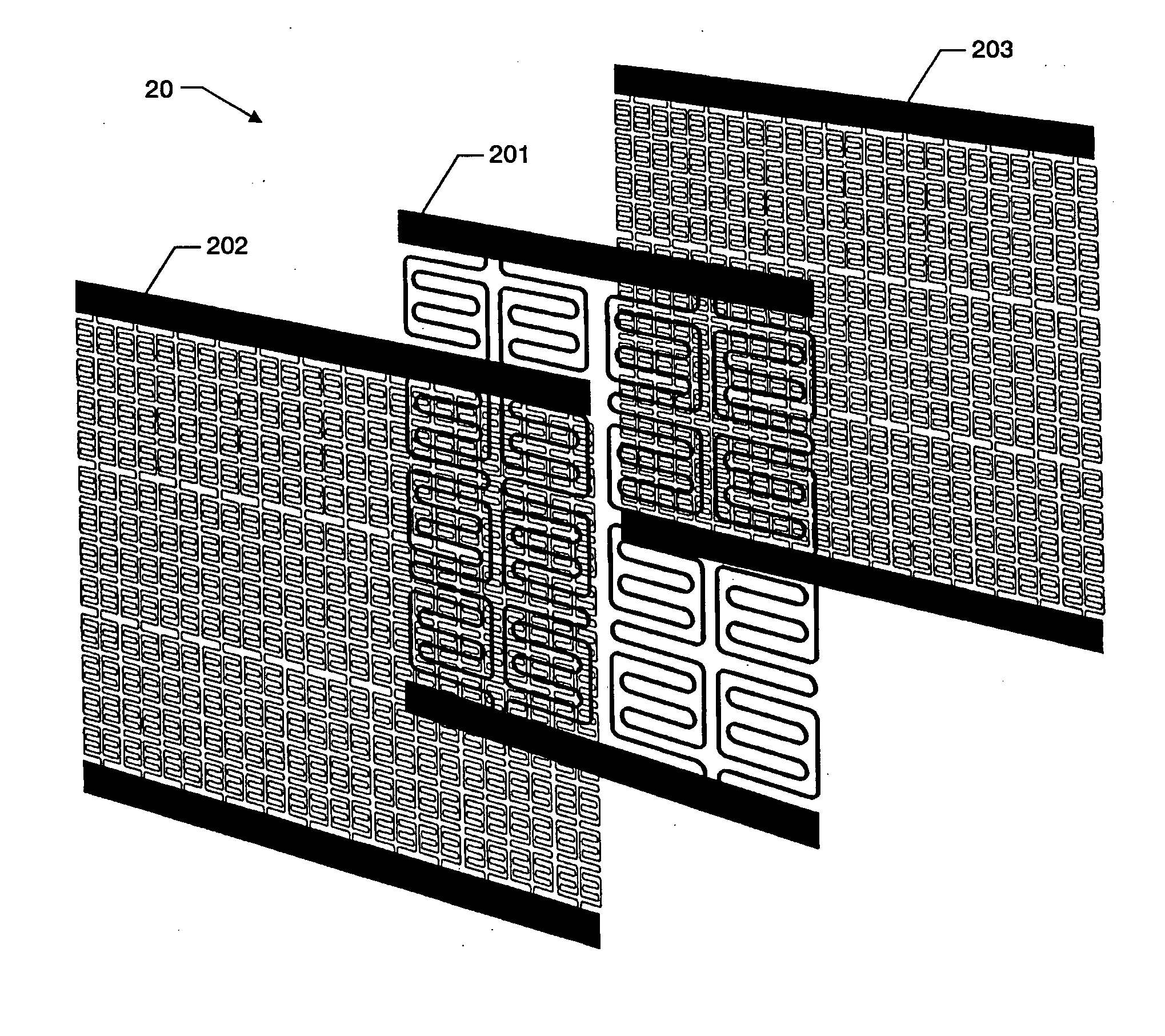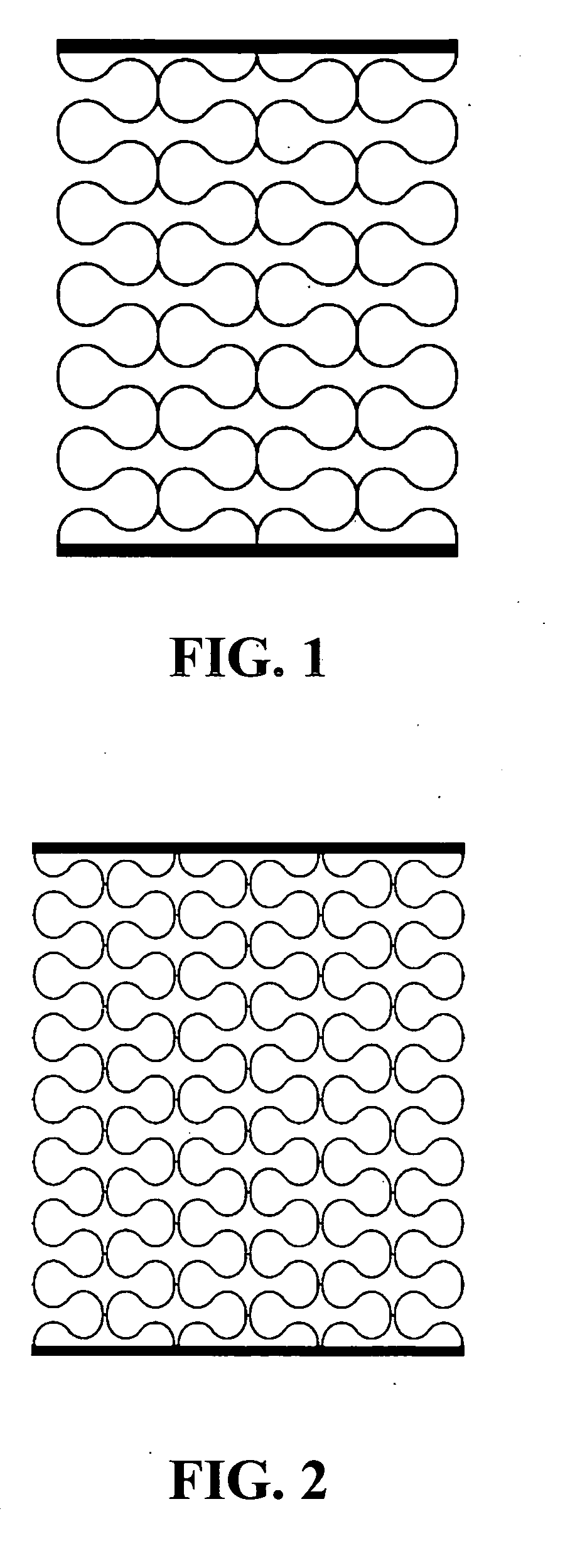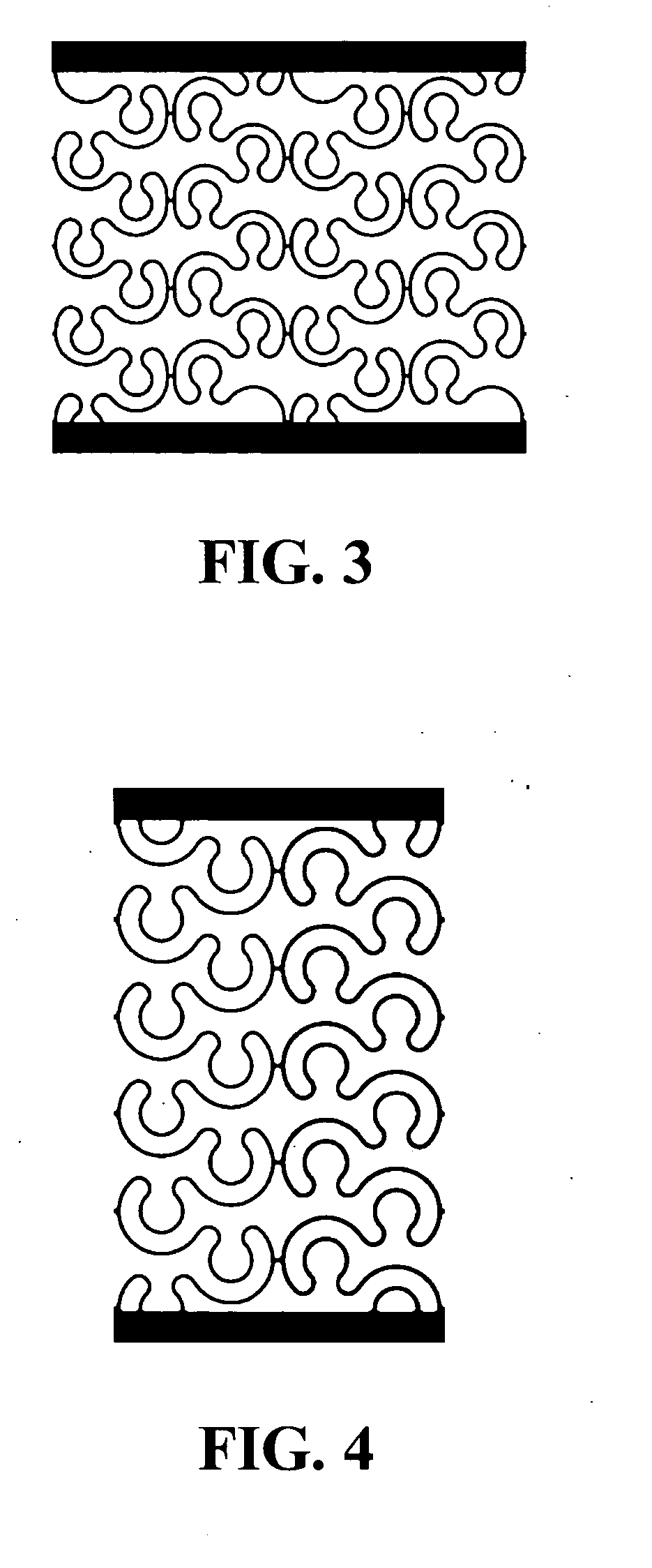Adaptive composite skin technology (ACTS)
a composite skin and adaptive technology, applied in the field of aerodynamic skin materials, can solve the problems of nagl not having a planar spring skeletal structure or elastomeric component, unable to provide a large-scale smooth surface, and requiring a thick section and excessive driving force, so as to achieve large-scale deflection and maintain smoothness and rigidity
- Summary
- Abstract
- Description
- Claims
- Application Information
AI Technical Summary
Benefits of technology
Problems solved by technology
Method used
Image
Examples
Embodiment Construction
[0016] The present invention is a flexible skin, which smoothly “wraps” a structural shape, with low actuation force required to stretch or warp the surface. The skin assembly consists of a relatively stiff internal skeleton, made of metallic or possibly plastic / composite material. Visual examples of internal skeleton geometry are provided in FIGS. 1-40.
[0017] One embodiment of the present invention consists of multiple layers of flexible components, including at least one internal skeleton. A first step in producing the internal skeleton is to develop the geometry of a single element of a full 2-D planar spring design that visually appears to have suitable mechanical properties, depending on the type and direction of in-plane deflection desired. Global elongation is driven by the beam bending properties of the members of the planar spring. At one extreme is a 1-dimensional spring that is very flexible in one direction and completely stiff in the orthogonal direction. Many requirem...
PUM
| Property | Measurement | Unit |
|---|---|---|
| ultimate tensile strength | aaaaa | aaaaa |
| elongation | aaaaa | aaaaa |
| flexible | aaaaa | aaaaa |
Abstract
Description
Claims
Application Information
 Login to View More
Login to View More - R&D
- Intellectual Property
- Life Sciences
- Materials
- Tech Scout
- Unparalleled Data Quality
- Higher Quality Content
- 60% Fewer Hallucinations
Browse by: Latest US Patents, China's latest patents, Technical Efficacy Thesaurus, Application Domain, Technology Topic, Popular Technical Reports.
© 2025 PatSnap. All rights reserved.Legal|Privacy policy|Modern Slavery Act Transparency Statement|Sitemap|About US| Contact US: help@patsnap.com



